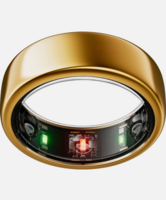Imagine enduring years of unexplained pain, uncertainty, and frustration while searching for answers about your health. This is the reality for many women living with endometriosis, a condition affecting millions worldwide but often taking years to diagnose.
Traditionally, confirming endometriosis has required laparoscopic surgery — an invasive and daunting prospect. But what if getting answers didn’t have to mean going under the knife? Thanks to advancements in medical science, new non-surgical methods are offering hope and transforming the diagnostic journey for endometriosis.

But first, what is endometriosis?
Endometriosis occurs when tissue similar (but not identical) to the lining of the uterus grows outside of it, often on the ovaries, fallopian tubes, or other pelvic structures. This rogue tissue can cause a range of problems, including pain, inflammation, and fertility challenges.
The symptoms can vary widely, making diagnosis tricky. Some women experience debilitating menstrual pain, pain during intercourse, or pain when urinating or having bowel movements. Others may have no obvious symptoms and only learn about the condition when facing infertility issues — also known as “silent” endometriosis. This diversity in symptoms is why endometriosis is often misdiagnosed or undiagnosed for years.
The traditional gold standard: Laparoscopic surgery
For decades, the only definitive way to diagnose endometriosis has been through laparoscopic surgery. In this procedure, a surgeon makes small incisions in the abdomen to insert a camera and identify endometrial tissue. While this approach can confirm the presence of endometriosis and allow for immediate removal of lesions, it’s invasive, costly, and comes with surgical risks.
As Tara Harding, a doctorate family nurse practitioner experienced in diagnosing and managing endometriosis, explains, “Surgery is a big ask during the first appointment. For some, there are barriers like travel or lack of insurance coverage. While surgery is often the goal, many women want answers sooner — and non-invasive options are a big step forward.”

Non-surgical diagnostic options for endometriosis
The good news is that medical advancements have brought promising non-surgical methods to the forefront, offering quicker and less invasive alternatives for diagnosing endometriosis. However, it’s important to note that non-invasive methods like MRI and transvaginal ultrasound are only effective for advanced stages of endometriosis, limiting their utility in detecting early or less severe cases.
Transvaginal ultrasound
Often the first step in diagnosing endometriosis, transvaginal ultrasounds can detect ovarian cysts (endometriomas) linked to the condition. While helpful, this method isn’t foolproof, as it may miss smaller lesions or those in less typical locations.
Magnetic resonance imaging (MRI)
MRI scans offer detailed views of soft tissues and can sometimes identify endometrial implants that ultrasound might miss. They are particularly useful for spotting deep infiltrating endometriosis, which can affect organs beyond the pelvic region.
Blood tests and biomarkers
Researchers are exploring blood tests that identify biomarkers associated with endometriosis. Although these tests are not yet widely available, they hold the promise of providing a quick, minimally invasive diagnostic tool in the future.
The MyReceptiva test
One of the most exciting developments in non-surgical diagnosis is the MyReceptiva test, which analyzes a small sample of endometrial tissue for the presence of BCL6, a protein linked to inflammation and endometriosis. The test has been around for over 8 years but used exclusively in the IVF setting. Now available for women with pain or fertility issues, the test can be ordered online directly with guidance from specialists in endometriosis.
Harding highlights the value of this test, explaining, “MyReceptiva is a non-invasive option that checks for a biomarker, BCL6, which can indicate endometriosis, even when imaging isn’t conclusive. I tell my patients that this test can give us clues about whether endometriosis is likely causing their symptoms. If positive, it allows us to create a more informed treatment plan.”
The sample for this test is collected in a quick, in-office procedure and doesn’t require anesthesia. Results are usually available within a week, providing women with answers faster than the traditional diagnostic timeline, which often stretches years.

Comparing laparoscopy and non-surgical options for treating endometriosis
While non-surgical methods are promising, laparoscopic surgery remains the gold standard. “Traditional laparoscopy lets us directly visualize and remove lesions, providing both diagnosis and treatment,” Harding says. “However, for many women, non-invasive tests like MyReceptiva offer insight without the risks of surgery. It’s a huge win for women wanting quicker answers and a plan to move forward.”
Why early diagnosis matters
Diagnosing endometriosis early can make a significant difference. Early identification allows for earlier treatment, which may prevent further damage, improve quality of life, and protect fertility. Harding emphasizes, “Non-invasive options like MyReceptiva shorten the timeline to diagnosis from the average 7–10 years, giving women the chance to pivot their treatment plans sooner.”
Advocating for yourself
If you suspect you have endometriosis, don’t hesitate to advocate for your health. Discuss your symptoms openly with your doctor and ask about non-surgical diagnostic options like MyReceptiva. Remember, you know your body best, and your concerns deserve to be taken seriously.
The future of endometriosis diagnosis
With ongoing research and innovation, the future of endometriosis diagnosis looks brighter than ever. From advanced imaging to groundbreaking tests, we are moving closer to a world where women can get faster, less invasive answers about their health.
As Harding puts it, “These new tools are a game-changer in a field where options were once limited. They empower women to take control of their health and reduce the uncertainty that has surrounded this condition for so long.”
Endometriosis is complex, but knowledge is power. By understanding the evolving diagnostic options, you can make informed decisions and seek the care you need to live your life fully.
Kristyn Hodgdon is the Co-Founder and Chief Creative Officer at Rescripted.

.webp)






.jpg)














